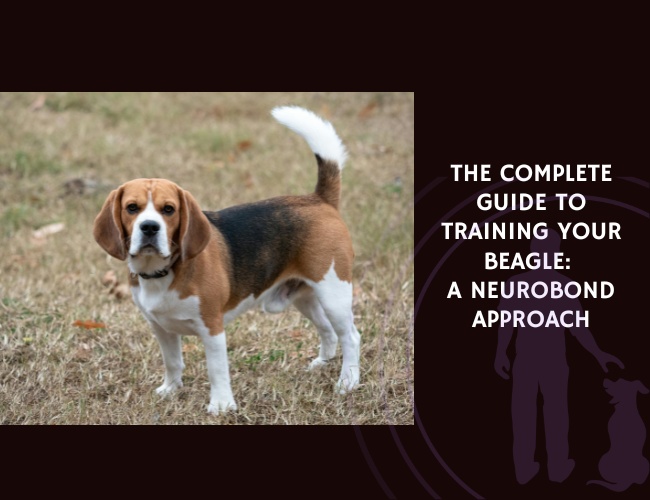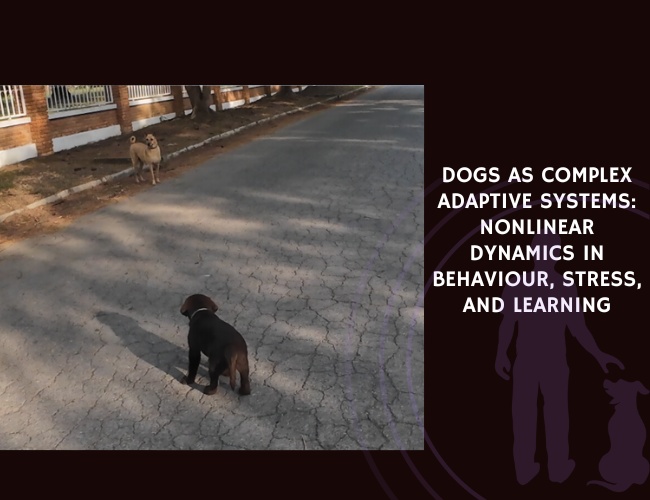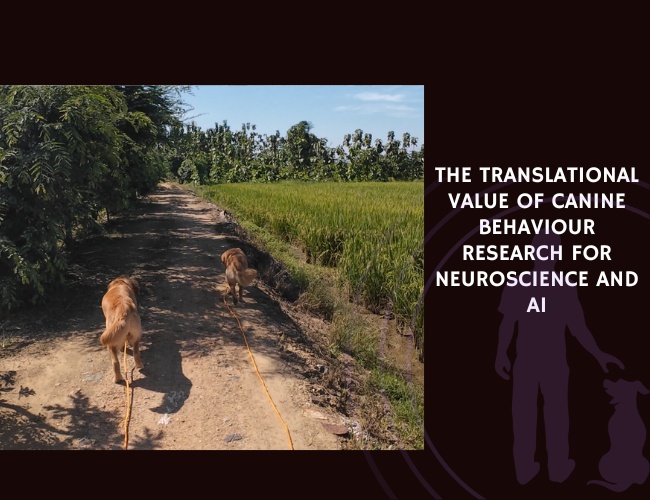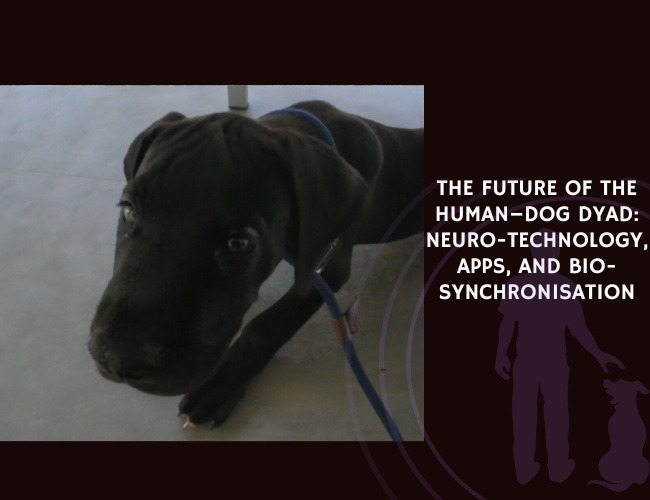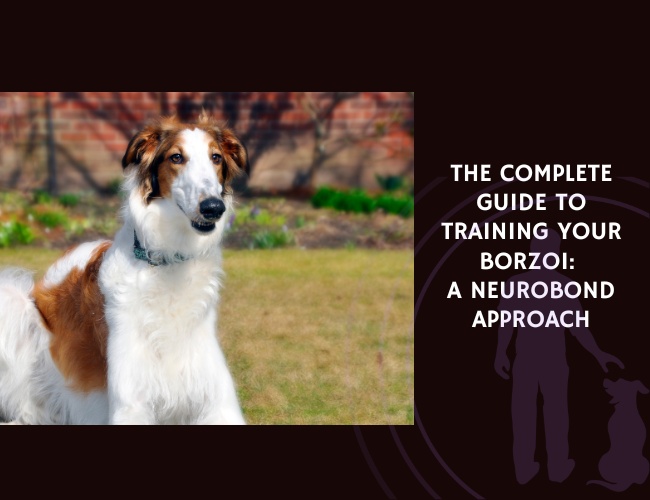Introduction: Understanding Your Beagle’s Ancient Heritage
Your Beagle carries within them centuries of hunting wisdom—a nose that can detect scents diluted to one or two parts per trillion, and a heart bred for tireless pursuit across countryside fields. This isn’t just a cute companion lounging on your sofa; this is a sophisticated biological system designed for one primary purpose: following scent trails with unwavering determination. Understanding this truth transforms how we approach their training journey together.
The NeuroBond approach recognizes something fundamental that traditional training often misses: your Beagle’s “stubbornness” isn’t defiance—it’s actually their operating system working exactly as designed. When we stop fighting against their nature and start working with it, something magical happens. The invisible leash of trust replaces the constant battle for control. 🐾
Character & Behavior: The Scent-Driven Mind
The Neuroscience of Scent Obsession
When your Beagle catches an interesting smell, their brain literally changes its operational mode. The olfactory bulb—proportionally 40 times larger than ours—floods their consciousness with information we can’t even imagine. Think of it like this: if human vision were suddenly amplified to see ultraviolet and infrared spectrums simultaneously, we’d be just as overwhelmed and distracted. This is your Beagle’s everyday reality.
The amygdala connection plays a crucial role here. Scent directly connects to emotional and memory centers, meaning every smell carries emotional weight. That seemingly random sniffing session? Your Beagle is reading an entire novel written in molecules—who passed by, their emotional state, what they ate, where they’ve been. This isn’t distraction; it’s data processing at its finest.
Energy Patterns and Daily Rhythms
Beagles demonstrate what behavioral scientists call “persistence hunting energy”—not the explosive bursts of a Border Collie, but sustained, methodical endurance. This means your Beagle doesn’t just need exercise; they need purposeful exploration. A 30-minute leashed walk around the block leaves them mentally unsatisfied, like reading only chapter titles of a book.
The NeuroBond approach suggests restructuring their day around scent-enrichment periods:
- Morning: 15-minute “sniff walk” with no agenda except following their nose
- Midday: Structured training integrated with scent work
- Evening: Calming nose work games indoors to satisfy mental needs
This rhythm respects their biological imperative while building the connection that makes training possible. Remember: a mentally satisfied Beagle is a trainable Beagle.
Vocalization & Communication: Understanding How Your Beagle ‘Talks’
The Three Voices of Your Beagle
Your Beagle possesses a sophisticated vocal repertoire that goes far beyond simple barking. Understanding these distinct vocalizations helps you respond appropriately, building trust rather than frustration.
The Bay: This deep, melodious howl is your Beagle’s ancestral hunting cry—it means “I’ve found something significant!” In the NeuroBond framework, we don’t punish the bay; we acknowledge it, then redirect. Your response might be: “Good find! Now come show me.” This validates their instinct while creating a new behavioral loop.
The Arousal Bark: Sharp, repetitive, often frustration-based. This usually signals overstimulation or unmet needs. Rather than commanding “quiet,” the NeuroBond approach asks: “What solution is your dog seeking?” Often, it’s as simple as needing mental engagement or a change of environment.
The Conversational Grumble: Those adorable groaning, grumbling sounds during settling or mild protest. This is actually healthy communication—your Beagle is processing emotions and self-soothing. Let them express this; it’s part of their emotional regulation system.
Building Two-Way Communication
The invisible leash begins with communication that flows both ways. Your Beagle needs to know you’re listening, just as you need them to check in with you. Practice the “whisper game”—speak increasingly softly when giving familiar cues. You’ll notice your Beagle naturally leans in, creating voluntary attention rather than forced compliance.
Training & Education: The NeuroBond Method in Practice
First Foundations: Building the Emotional GPS
Before any formal training, we establish what neuroscientists call the “secure base effect.” Your Beagle needs to internalize you as their emotional GPS—the safe harbor they return to when the world becomes overwhelming. This isn’t about dominance or being the “alpha”; it’s about becoming their trusted guide through a confusing human world.
Week 1-2: The Check-In Protocol Stand with your Beagle on a 6-foot leash in a familiar space. Do nothing. Don’t call, don’t command, just be present. Every time your Beagle naturally looks at you—even for a split second—mark it with a soft “yes” and offer a tiny, high-value treat (think pinhead-sized piece of cheese). You’re not teaching a command; you’re building an unconscious habit of connection.
Within days, you’ll notice your Beagle checking in more frequently. This becomes their default behavior under uncertainty—the foundation of the invisible leash.
Scent-Integrated Learning
Traditional training fights against the Beagle’s nose. The NeuroBond approach makes scent the pathway to learning. Here’s how we transform their greatest “distraction” into their most powerful training tool:
The Hidden Recall Game: Instead of calling your Beagle away from interesting smells (fighting their nature), we make coming to you a scent adventure. Hide tiny treats along the path between your Beagle and you. Call once, then stay silent. Let them discover that moving toward you creates a scent trail of rewards. Soon, your recall cue triggers excitement about what they’ll discover on the journey to you, not disappointment about what they’re leaving behind.
Discrimination Training for Focus: Set up three identical containers, but only one contains a treat. Your Beagle must make eye contact with you before you’ll indicate which one. This builds impulse control through their strength (scent work) rather than against it. Studies show this type of discrimination training maintains cognitive function throughout their life while building handler focus.
The 5-Minute Miracle
Beagles have approximately 5-10 minutes of quality attention for non-scent activities. Fighting this biological reality creates frustration for everyone. Instead, we structure training in what we call “espresso shots”—intense, focused, successful micro-sessions.
Example Daily Training Flow:
- 8:00 AM: 5 minutes of check-in practice during breakfast prep
- 12:30 PM: 5 minutes of “find it” games with their lunch kibble
- 4:00 PM: 5 minutes of loose-leash walking practice in the yard
- 7:30 PM: 5 minutes of settling practice with a frozen Kong
Twenty minutes total, but spread across natural transition points in your day. Your Beagle never reaches frustration threshold, and training becomes seamlessly integrated into life rather than a separate battle.
Performance & Activities: Channeling Ancient Instincts
Structured Scent Work: The Mental Marathon
Your Beagle’s nose isn’t just a distraction—it’s their superpower waiting to be channeled. Formal nose work provides the mental exhaustion that physical exercise alone cannot achieve. Think of it as CrossFit for their brain.
Beginning Nose Work Protocol: Start with “passive detection”—your Beagle simply has to find hidden treats in cardboard boxes. No commands, no pressure. They’re learning that using their nose in a structured way brings rewards. Graduate to specific scent discrimination (finding one particular tea bag among many) and finally to indication behaviors (sitting when they find the target scent).
This isn’t just a game. Research shows that 15 minutes of intensive nose work equals roughly an hour of physical exercise in terms of mental fatigue. A tired Beagle brain is a happy, compliant Beagle brain.
The Tracking Journey
Tracking combines your Beagle’s two greatest loves: following scent and exploring with you. Unlike competitive tracking, NeuroBond tracking focuses on the journey, not the destination.
Lay a simple track in your yard using hot dog water (drag a hot dog along the ground). Your Beagle follows the scent while you follow them—but here’s the key: randomly call them back to you for a reward, then immediately release them to continue tracking. You’re teaching that leaving an interesting scent to come to you doesn’t mean the fun ends; it’s just a pleasant interruption.
This builds the neural pathways for recall even under high distraction—the holy grail of Beagle training.
Nutritional Recommendations: Feeding the Learning Brain
The Hunger-Motivation Connection
Beagles are notoriously food-motivated, but there’s a neurological reason that goes beyond simple gluttony. Their hunting heritage created a “feast or famine” metabolism—their brains are wired to take advantage of every feeding opportunity. We can use this to our training advantage.
The Training Meal Protocol: Instead of free-feeding or scheduled meals in a bowl, use meal times as training opportunities:
- Morning kibble becomes recall practice rewards
- Lunch becomes a puzzle feeder challenge
- Dinner is earned through evening training games
Your Beagle’s daily food intake remains the same, but now every calorie reinforces desired behaviors. Studies show this approach can accelerate training progress by up to 40% while preventing obesity—a common Beagle health concern.
Cognitive Support Through Nutrition
Research on aged Beagles has revealed fascinating connections between diet and learning capacity. Antioxidants (particularly vitamin E and C), medium-chain triglycerides, and omega-3 fatty acids have been shown to slow cognitive decline and maintain training responsiveness throughout life.
Consider supplementing with:
- Fish oil (EPA/DHA): 20-30mg per pound of body weight
- Coconut oil: 1 teaspoon per 10 pounds (introduces medium-chain triglycerides)
- Blueberries: A few as training treats (powerful antioxidants)
This isn’t just about physical health—it’s about maintaining the neuroplasticity that makes lifelong learning possible.
Curious. Tireless. Connected.
Scent defines their world. With olfactory bulbs 40 times larger than ours, Beagles process smells as stories, turning every walk into an immersive sensory journey.
Persistence drives energy. Built for endurance, they thrive on sustained exploration and purposeful sniffing, not just quick bursts of activity or routine walks.
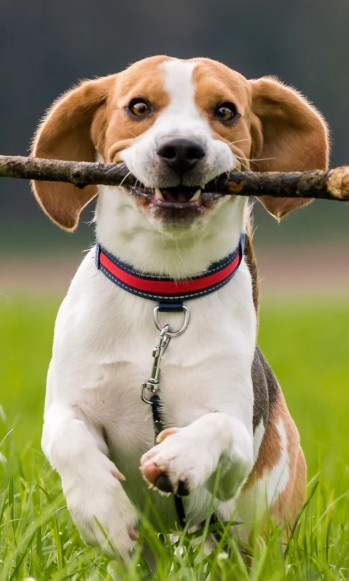
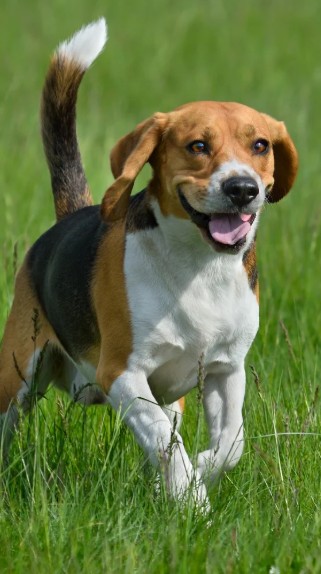

Connection shapes training. By respecting their scent-driven nature, the NeuroBond approach transforms stubbornness into cooperation, replacing conflict with trust.
Health Concerns: The Body-Mind Training Connection
Ear Health and Training Success
Those adorable floppy ears create a perfect environment for infections, which can severely impact training. A Beagle with ear discomfort becomes irritable, distracted, and unable to focus. The head shaking and scratching compete with any training attempts.
Weekly ear check protocol: Make ear examination a positive bonding experience. Touch ears briefly during calm moments, rewarding stillness. Graduate to longer examinations with higher-value rewards. This prevents ear care from becoming a battle and allows you to catch problems early.
The Hypothyroid-Behavior Link
Beagles show higher rates of hypothyroidism than many breeds, often manifesting as behavioral changes before physical symptoms appear:
- Increased anxiety or fearfulness
- Reduced training responsiveness
- Unexplained aggression
- Mental dullness
If your previously responsive Beagle suddenly becomes “stubborn,” consider a thyroid panel. Research shows that correcting thyroid imbalances can dramatically improve training outcomes within weeks. 🧠
Lifestyle & Environment: Creating the Learning Ecosystem
Environmental Management for Success
Your home environment either supports or sabotages training efforts. For Beagles, scent management becomes crucial. Every accessible trash can, every reachable counter, every unfenced yard becomes a training failure waiting to happen.
The NeuroBond Environmental Setup:
- Install baby gates to create “decompression zones” where your Beagle can relax without constant supervision
- Use puzzle feeders and snuffle mats in these spaces for self-directed mental stimulation
- Create a “scent garden” in your yard—plant dog-safe herbs like mint, basil, and rosemary for supervised exploration
- Establish clear boundaries between “free sniff zones” and “focus required zones”
This environmental structure means your Beagle isn’t constantly fighting their instincts, reducing overall stress and increasing training receptivity.
The Multi-Dog Dynamic
Beagles were bred to work in packs, and many families find their Beagle thrives with canine companionship. However, this creates unique training challenges. Pack mentality can override individual training—one Beagle catching a scent can trigger a group hunting response that no amount of recall training can overcome.
Pack Training Protocol:
- Always train new behaviors individually first
- Practice group commands in controlled environments before real-world application
- Use “split attention” exercises—one dog in a down-stay while the other works
- Recognize that two Beagles together will always be “more Beagle” than one alone
The NeuroBond approach sees the pack as a system—connection with you must be stronger than pack cohesion for training to succeed.
Senior Care: Maintaining the Bond Through Aging
Cognitive Preservation Through Enrichment
Those longitudinal studies on aged Beagles revealed something remarkable: cognitive decline isn’t inevitable. Beagles who received continuous behavioral enrichment throughout life maintained training responsiveness well into their senior years.
The Senior Enrichment Protocol:
- Introduce new scents weekly (essential oils on cotton balls hidden around the house)
- Rotate puzzle feeders to prevent habituation
- Teach one new trick monthly—even simple ones like “touch” to a new object
- Maintain shortened versions of established training routines
Your senior Beagle’s nose remains sharp even as other senses fade. Scent work becomes even more critical for mental health and maintaining that precious connection you’ve built over the years.
Adapting Training for Physical Changes
Arthritis, vision loss, and hearing decline don’t mean training stops—it evolves. The invisible leash you’ve built through years of NeuroBond practice becomes your senior Beagle’s lifeline.
Replace verbal cues with hand signals before hearing loss occurs. Practice “follow the food” exercises to maintain attention despite vision changes. Most importantly, recognize that your senior Beagle’s check-ins might become more frequent—they’re seeking reassurance as their world becomes less clear. This isn’t regression; it’s trust in its purest form. 🧡
Common Challenges: Troubleshooting with Compassion
The Recall Impossibility
Let’s be honest: your Beagle will probably never have 100% reliable recall when a fresh rabbit trail appears. This isn’t failure—it’s biology. The NeuroBond approach focuses on harm reduction rather than perfect compliance.
The Reality-Based Recall Strategy:
- Always use a long line in unfenced areas
- Practice “interrupted hunting”—let them follow a scent for 30 seconds, then call
- Reward check-ins during scent-following rather than demanding complete disengagement
- Accept that management (leashes, fences) isn’t failure—it’s responsible ownership
You’re not aiming for a Beagle who never follows scents; you’re building one who remembers you exist even while following them.
The Eternal Counter Surfer
Your Beagle’s height makes counters an irresistible temptation. Traditional training says “correct the behavior,” but the NeuroBond approach asks, “Why are we setting them up for failure?”
The Solution System:
- Environmental management is primary—nothing tempting on counters, ever
- Teach an incompatible behavior—”go to mat” when you’re preparing food
- Reward the absence of jumping up more than punishing the presence of it
- Create legal scavenging opportunities through puzzle feeders and hidden treats
Remember: every time your Beagle successfully counter surfs, the behavior is reinforced by the food they find. Prevention is infinitely more effective than correction.
House Training Marathons
Female Beagles’ susceptibility to UTIs between 4-6 months can create house training setbacks that aren’t behavioral—they’re medical. The NeuroBond approach incorporates health awareness into training expectations.
The Extended House Training Protocol:
- Expect 6-8 months for full reliability (not the 3-4 months of easier breeds)
- Schedule veterinary checks if regression occurs—rule out medical issues first
- Use enzymatic cleaners religiously—your Beagle’s nose detects residual odors we can’t
- Create positive associations with elimination areas through post-potty play sessions
- Never punish accidents discovered after the fact—your Beagle cannot connect delayed consequences
Patience isn’t just a virtue here—it’s a necessity. Your Beagle isn’t being spiteful; they’re learning at their own biological pace.
Conclusion: Is This Journey Right for You?
Training a Beagle through the NeuroBond approach isn’t about creating an obedient robot—it’s about building a partnership with a sophisticated biological system that happens to walk on four legs and steal your socks. You’re not fighting against 600 years of selective breeding; you’re learning to dance with it.
Ask yourself: Can you find joy in watching your Beagle’s face light up when they catch an interesting scent, even if it means your walk takes twice as long? Can you appreciate the ancient wisdom in their bay, even at inconvenient moments? Can you see their scent-driven “distractions” not as defiance but as their authentic self expressing what they were born to do?
If you’re seeking a dog who will hang on your every word, execute perfect recalls regardless of distractions, and prioritize your approval above all else—the Beagle might frustrate you. But if you’re ready for a journey of mutual discovery, where training becomes less about control and more about connection, where success is measured in moments of voluntary attention rather than perfect compliance, then your Beagle will teach you something profound about the beauty of working with nature rather than against it.
The invisible leash isn’t built in a day, a week, or even a month. It’s woven slowly through thousands of tiny moments—every check-in rewarded, every instinct redirected rather than punished, every success celebrated. Your Beagle will never stop being a Beagle, but with the NeuroBond approach, they become a Beagle who chooses you, even when the world offers a thousand fascinating distractions.
That choice, made freely by a dog bred for independence, is worth more than all the perfect sits and stays in the world. Welcome to the journey—your nose-led, bay-singing, utterly devoted companion is waiting to show you a world you’ve never smelled before. 🐾
Next Steps in Your NeuroBond Journey
Ready to begin? Start with the check-in protocol tomorrow morning. Don’t announce it, don’t make it formal—just stand with your Beagle and reward eye contact. In that simple beginning lies the seed of everything that follows. The journey of a thousand miles (or a thousand scent trails) begins with a single glance.
Remember: You’re not training a Beagle. You’re building a relationship with one. There’s a world of difference, and your Beagle knows it.

